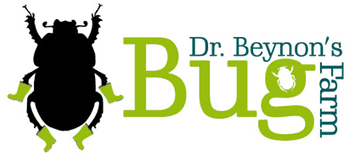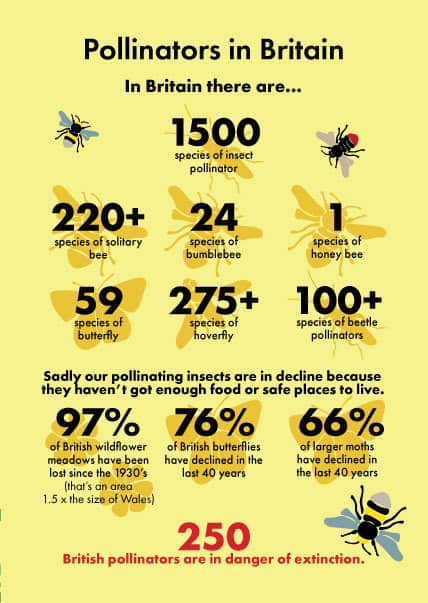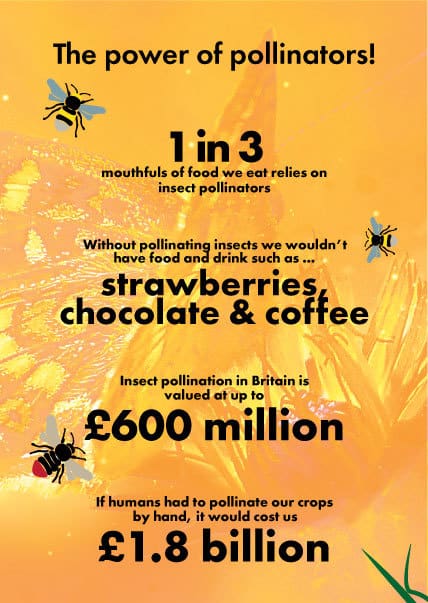Pollinators
For many plants, pollination is an essential process that enables them to reproduce and produce seeds and fruit. Some plants are able to self pollinate, but the majority of plants, including the ones that produce our food, rely on wind or insects for pollination. In fact, one in three mouthfuls of food we eat, relies on insect pollination! Most people associate insect pollinators with bees, but hoverflies, wasps, butterflies, moths and beetles are all important pollinators too. These insects provide a completely free service, allowing us humans to farm crops such as strawberries, apples, beans and coffee.
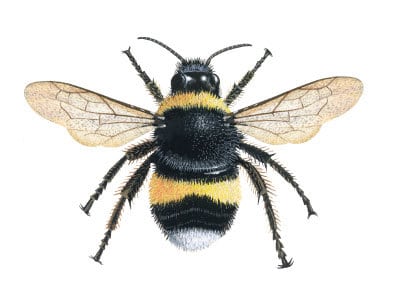
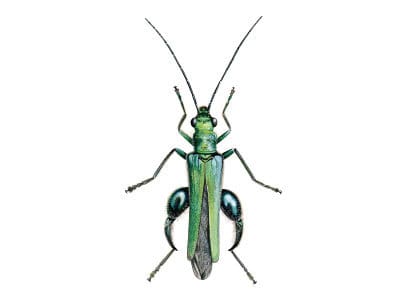
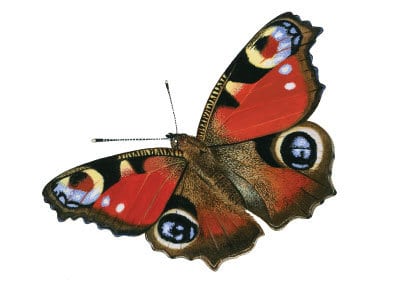
There are 1500 different species of insect pollinator in Britain, but sadly, hundreds of these are now in decline. Due to changes in the way we keep our gardens and farm our land, much of their habitat (homes and food) has been lost. For example, many insect pollinators rely on nectar-rich wildflower meadows for food and places to nest or lay their eggs. However, 97% of these meadows have been lost since the 1930’s! People are also much tidier than they once were, clearing up piles of leaves, spraying weeds and mowing lawns on a regular basis. These tidy tendencies can also reduce the number of safe and suitable places for insect pollinators to nest, feed and shelter. The St David’s Pollinator Trail aims to raise awareness of these small but important little creatures and highlight ways you can help look after them.
Here are our five top tips for helping insect pollinators…
1. Plant a pot with flowering plants
Many flowers provide important food for pollinators. Look out for the RHS ‘Plants for Pollinators’ stamp when purchasing plants to help you find ones that are pollinator favourites.
2. Leave a ‘weedy patch’ in your garden
Many butterflies will only lay their eggs on stinging nettles, when the caterpillars hatch, they feed on the leaves.
3. Mow your lawn less often!
Long grass provides a safe place for butterflies and moths to roost and lay their eggs. Flowering clover and dandelions are a great food source for lots of bees and hoverflies.
4. Reduce use of pesticides and herbicides
Many chemicals can harm pollinators.
5. Create a bee or ‘bug’ hotel
This will provide nest sites for solitary bees and homes for beetles.
